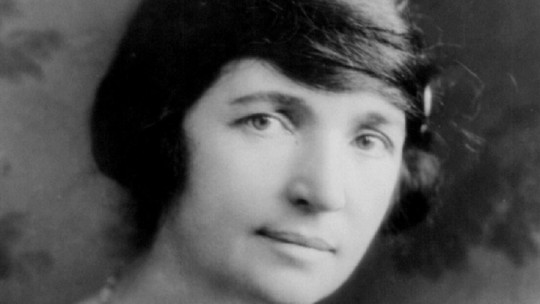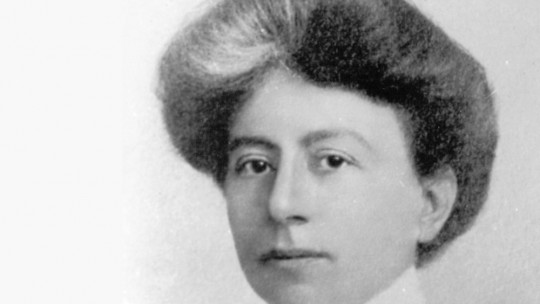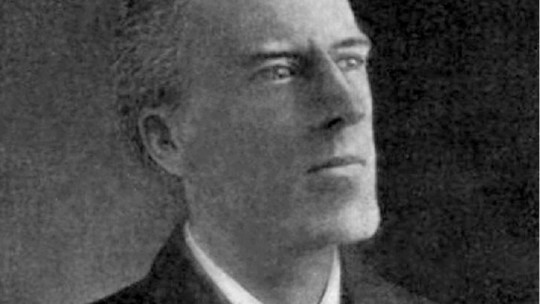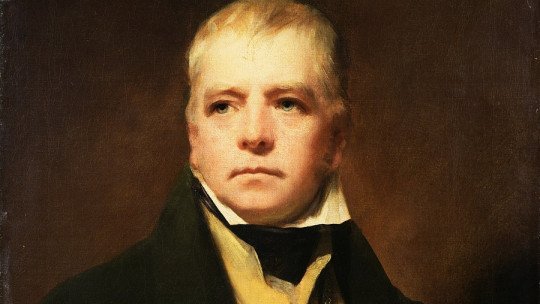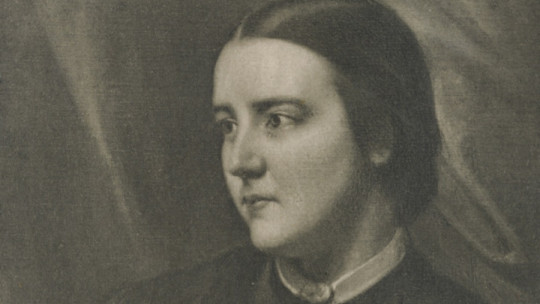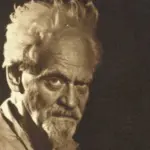Margaret Sanger was an American nurse crucial in the fight for birth control. During her lifetime she founded various associations promoting the use of contraceptives and family planning.
Although her activism has been truly beneficial in terms of women’s reproductive health, Sanger is a figure with her chiaroscuro, being related to racist and eugenic positions.
Next We will talk about the life of this pioneer in family planning and also about her philosophy, through this biography of Margaret Sanger
Brief biography of Margaret Sanger
The figure of Margaret Sanger is that of a firm defender of contraceptive methods, both as a birth control measure and to prevent thousands of women from having to have clandestine abortions in the United States at the beginning of the 20th century.
Despite legal persecution, Sanger continued her fight, gaining wide recognition and founding associations such as the American League for Birth Control , in addition to overturning laws that considered talking about family planning pronographic. Here we will learn about his life history starting from his early years.
Childhood and youth
Margaret Sanger born Margaret Louise Higgins on September 14, 1879 in Corning , NY. She was the sixth of eleven children, her parents being Michael Hennessey Higgins, a free-thinking Irish bricklayer, and Anne Purcell Higgins, a Catholic worker of Irish origin.
Although his father studied medicine and phrenology, he ultimately chose to become a stonemason carving angels, saints, and tombstones in stone. As time went by, the fervent Catholic would turn to more radical atheism and an activist in favor of women’s suffrage and free public education, something that influenced the young Margaret. Her mother, Anne, was pregnant 18 times, having 11 live births during the 22 years before her death.
Given how large the family was, Margaret spent most of her youth helping her younger siblings Thanks to the support of her two older sisters, she was able to attend Claverack College and the Hudson River Institute. In 1900 she enrolled at White Plains Hospital as a nursing trainee, a job she abandoned two years later when she married architect William Sanger, thus becoming Margaret Sanger.
William was an anarchist and atheist more opposed to organized religion than Margaret’s father. Despite suffering from some bouts of tuberculosis, young Margaret gave birth to three children, enjoying a quiet life with her family in Westchester County, New York.
Activism and exile
But his work and intellectual life was not exactly calm. She participated in numerous debates in radical circles and came into contact with the birth control movement in addition to learning about the movement in favor of free love from Emma Goldman.
At the end of 1912 he experienced an event that would make him reflect: witnessed the death of a woman who had tried to have a clandestine abortion It was then that he began to dedicate himself to the dissemination of birth control and defense that sex should not simply be an action with a reproductive purpose.
Around this time the publication in New York City of The Woman Rebel (“The Rebel Woman”), in which Sanger cried out against the evils of capitalism and religion. In this publication she defended contraceptive methods and population control under the slogan “Without gods or masters.” This magazine would be truly a pioneer in its field and would be the one that would coin the term “birth control.”
By publishing it, Sanger She began to be persecuted by the justice system, being accused of having violated the Comstock law a law that prohibited what was considered pornography, including any promotion of sexual health methods.
Fearing for her freedom, Sanger went into exile in Britain, while publishing a pamphlet titled Family Limitation, in which he attacked that same law. That pamphlet would become a kind of gospel among American birth control supporters.
During her exile in Europe Margaret Sanger would meet the leaders of the neo-Malthusian league and Havelock Hellis , a eugenicist psychologist and sexologist. In Britain he would have the opportunity to study the theories and techniques of birth control with Aletta Jacobs and Dr. Johan Rutgers.
Around this same time he founded the National Birth Control League, which in 1942 would adopt its current name: Planned Parenthood Federation of America (PPFA).
Return to the United States
In 1915 he returned to the United States thanks to the accusations against him being raised. So, taking advantage of this, he embarks on a speaking tour throughout the country, promoting birth control and attacking anti-pornographic laws, which on many occasions threatened people’s sexual freedom.
To put pressure, tries to get the support of American suffragettes , but the feminist movement delayed it for fear that, if it supported a movement as radical as Sanger’s, women’s suffrage would not be approved. After seeing that feminism did not give her clear support, she decided to take refuge in the neo-Malthusian and eugenicist movements.
In 1916, he created the country’s first family planning clinic in Brooklyn , which would be closed by the New York police and all its materials would end up confiscated. As time went by, he would go from a position in favor of sexual liberation to defending contraceptive methods as a purely medical method, with the aim of avoiding unwanted children and dead women in clandestine abortion clinics.
This is why she, along with her assistant Ethel Byrne, distributed contraceptive methods, for which they ended up being convicted. It would be at this time that she began the publication of “Birth Control Review”, which appeared briefly and then resurfaced with barely any continuity between the years 1920 and 1928.
In 1927 she was the main promoter of the first World Population Congress , already being considered the main representative of the neo-Malthusian movement in the United States. From that congress, over time, the International Union for the Scientific Study of Population (IUSSP) would emerge.
The creation in 1931 of the Population Association of America was also his initiative, which received strong financial support from great patrons, including the magnate F. Gamble, philanthropist and eugenicist. With his activism, Sanger had managed to get North American society, totally opposed to any measure in favor of birth control, to invest large amounts of money in favor of the design of new contraceptive methods.
Last decades and death
His last decades were spent promoting the approval of laws for greater birth control, in addition to helping in the legalization of abortion and the distribution of contraceptives in third world countries. Margaret Sanger died of congestive heart failure on September 6, 1966 in Tucson, Arizona being 86 years old.
His thoughts as an activist
Originally, Sanger was influenced by the socialist and feminist theses of her father Michael Hennessey Higgins The death of her mother made him rebel against the society in which he lived, especially because of its extremely woman-centered view of her as a being that she must reproduce no matter what. She was an avowed socialist, a firm enemy of capitalism and the evils she attributed to it. This was reflected in her positioning regarding the main issues that she dealt with in her activism.
Sexuality and abortion
Although it was quite radical, His way of seeing sexuality was similar to that of the 19th century Sanger conceived of sexuality as a weakness rather than a pleasure, something to blame for unwanted pregnancies due to a mistake. With birth control and starting from a perspective that was more health-related than feminist, she intended to prevent hundreds of women from finding themselves in the situation of having to have a clandestine abortion, dying in the process.
Although her activism helped legalize abortion in the United States, it must be said that at first she was opposed. It is said that she was not in favor of abortion more for fear that the woman would die sooner in the process than for moral motivations, although she is credited with having defended life at all costs. For her, contraceptive methods would be what would avoid this problem, which she came to consider as a “tragedy of civilization.”
Eugenics
One of the most controversial aspects regarding the figure of Margaren Sanger is his vision of human development loaded with racism He is credited with saying that, as one goes “down” the scale of human development, there is less sexual self-control. Apparently, he went so far as to say that Australian aborigines were the “lowest species” within the “human family,” just one step higher than chimpanzees.
This is why she was a supporter of what has been called negative eugenics. Is about the political view that argues that the human species can improve through social intervention His proposals included a more restrictive immigration policy, free access to contraceptive methods, racial segregation and sterilization of the intellectually disabled.
In her article “Population Control and Women’s Health” from 1917 she explains that natural selection reigned without interference in the origins of humanity. The least fit individuals died young and the fittest survived and ended up reproducing. However, as civilization has progressed, the “weakest” have had support from society, being able to reach adulthood and reproduce, having children with the same problems and perpetuating maladaptive traits.
Society, whether with religious motivation or humanism, has provided compassion, sorrow, tenderness and other elevated feelings that have protected the most vulnerable. For this, was so hostile to organized religions and charitable institutions , blaming them for creating a “race of degenerates.” In 1932, in his article “A Plan for Peace” he proposed the creation of laws that would prevent the entry of certain foreigners with traits harmful to the race.
But despite all these opinions, it seems that Sanger rejected active direct euthanasia, that is, purging people considered inferior. She was opposed to the Nazi regime, and she saw its mass extermination measures as true atrocities. She considered that this was not the way to control birth rates, but that this control should come from the families themselves. He believed that if parents considered that their mentally weak children should not reproduce, so it should be and it should not be the State that forced them.

